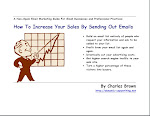The year after winning the Super Bowl, Vince Lambardi began the next season’s pre season practices with drills on blocking and tackling. In other words, even as world champions, he felt his great Green Bay Packers needed to keep learning and relearning the basics of the game.
In marketing and copywriting, the basics of our game are features and benefits.
Every day I see this need to relearn the basics of features and benefits. Daily I run across full-page magazine ads or web sites that leave me entertained, or even make me think, but do not give me or any other reader a compelling REASON to buy.
I am convinced that tremendous amounts are money are wasted each year by businesses that create advertisements, marketing materials and web content, which fail to give buyers compelling REASONS to buy from these companies.
Not only is money wasted as a result of the poor returns on investments these advertisements et al. generate; the failure to capture new customers and new sales, is likely an even bigger, although unseen, cost to these businesses.
“REASONS” to buy, of course is just another way to say “BENEFITS.” This article is part two of a series on one of the basics of our field, how to distinguish features from benefits. It is an attempt for all of us to go back to drilling on the "blocking and tackling" aspects of our game of marketing and copywriting.
So let's begin:
Why do you and I buy things? Why do we spend our money, whether it is our own money or money spent on behalf of our company, to acquire goods and services?
These questions get to the heart of what distinguishes a real benefit from a mere feature that looks and smells kinda like a benefit. With all that in mind, let’s look at four basics to our game of marketing and copywriting, when it comes to creating reasons and benefits:
- Change. I once read an over-hyped direct mail piece that began with the words, “This Product Will Change Your Life!” Now I don’t recommend using such extreme hyperbole to start your copy, but sometimes I write a similar statement at the top of my legal pad when I start working on a new copywriting project. My statement reads: ”How Can This Product (or Service) Change Someone’s Life (or business, or whatever)?”
Why would you buy a new luxury car? I presume you already own a car, so your basic transportation needs are already met. You might buy a new Mercedes because you want to change the experience you get when you drive. Or you might buy a hybrid in order to get more fuel efficiency out of a new car.
Why would a company lease new office space? Possibly because changing their office gives them more room or puts them in a better location to gain or service their customers. - Make a Promise. A real benefit is always a promise. If you spend a lot of money on an ad that fails to make a clear, specific promise to your target customers, you are wasting their time and your money.
What do you promise? Re-read step one. What kind of changes or improvements do your target customers want to make? I begin every copywriting project I take on by writing out a list of "I wants" as if I were the customer telling me what kinds of promises would appeal to him or her.
Make your promises target that area between where they are right now and where they want to be. - Offer a Solution. Next, a real benefit is usually a solution to a real problem. Now I tend to go off on tirades when I see the word, “solutions” bandied about like a buzzword. (See my recent article, "Solutions" is Not Just a Buzzword to see what I mean). A real solution is tied to a specific problem.
Most, if not all benefits are actually solutions to an aggravating problem (see another previous article You're Really Just Selling Aspirin).
If you can identify problems your potential clients face, you can craft solutions that help them relieve, escape or avoid the pain caused by those problems. - Opportunity. In the few instances that you are selling a problem that does not solve a problem, it will probably open the door to an opportunity, even if the opportunity is just pleasurable.
When you see an ad for a quaint country inn with a cozy fireplace and a spectacular view of a peaceful lake, that ad is presenting you with the opportunity to spend an enjoyable, romantic weekend.
When you see an ad for a local MBA program that can be taken in the evening, that ad is presenting the opportunity to advance your career. When you see an ad for a charitable organization, that ad is giving you the opportunity to give to a worthy cause. If your ad shows how to help small companies become big companies, you are presenting an opportunity.
All of these opportunities are benefits that must be spelled out clearly in your ad, marketing material, website etc.
Find out what motivates your prospective clients. Chances are their goals and ambitions will either be to solve a problem or seek out an opportunity (or both).
There is no excuse to fill your marketing materials with creative drivel that does not compel a reader to act. Real benefits show readers how to experience a change for the better, make a clear and definite promise, solve a problem or point the way to an opportunity.
Anything else is a waste of your marketing budget.
COPYRIGHT © 2006, Charles Brown

Labels: advertising, copywriting, features vs benefits



0 comments:
Post a Comment